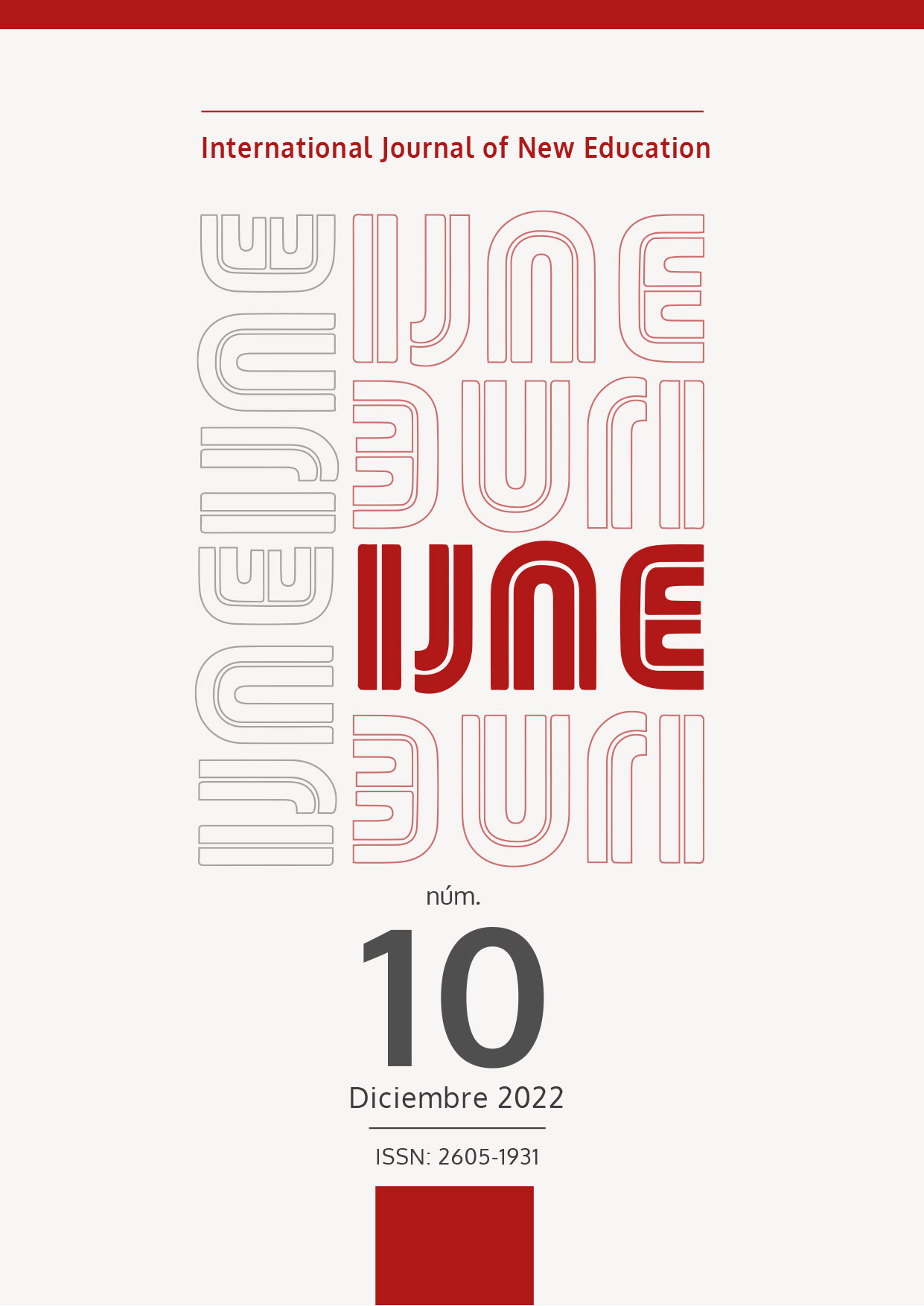Integration of science and music to conserve the environment through computational thinking
DOI:
https://doi.org/10.24310/IJNE.10.2022.14689Keywords:
teaching methods innovations, xperiential learning, computer programming, music education, science education, preservice teacher educationAbstract
The article presents and describes the Code, Science & Music Remix project, an educational experience focused on problematization in learning. It was designed to develop computational thinking from a curricular integration approach in the context of the Sustainable Development Goals (SDGs). The main purpose of the project was to promote the development of computational thinking in fifth grade students and future elementary level teachers. As part of the science classes, they learned about earth spheres and implemented programming workshops using the EarSketch platform. The platform aims for participants to learn to program, and develop computational thinking, while expressing their conceptualizations through music. This integration of science and music was applied in a musical composition with the purpose of raising awareness about the environment. Both the musical product and the process to achieve the project's objectives were presented to the school community to educate others about the need to conserve the environment and live in harmony with the SDGs for the benefit of the humanity.
Downloads
Metrics
Publication Facts
Reviewer profiles N/A
Author statements
Indexed in
-
—
- Academic society
- N/A
- Publisher
- Universidad de Málaga
References
Appleton, K. (2007). Elementary science teaching. In S.K. Abell & N. G. Lederman (Eds.), Handbook of research on science education (pp. 493-536). Lawrence Erlbaum Associates, Inc.
Blume, R. (1971). Humanizing teacher education. Phi Delta Kappa International, 52(7), 411-415. https://www.jstor.org/stable/20372937
Díaz Rolón, A. (2022, April 23). Poderoso mensaje ambiental en “lenguaje musical”. El Vocero. https://www.elvocero.com/verde/medio_ambiente/poderoso-mensaje-ambiental-en-lenguaje-musical/article_50921758-c29d-11ec-92f6-67c3a4a85450.html
Dierking, L. D., Falk, J. H., Rennie, L., Anderson, D., & Ellenbogen, K. (2003). Policy statement of the “informal science education” ad hoc committee. Journal of Research in Science Teaching, 40(2), 108–111. https://doi.org/10.1002/tea.10066
Duit, R., GropengieBer, H., Kattmann, U., Komorek, M., & Parchmann, I. (2012). The model of educational reconstruction: A framework for improving teaching and learning science. In D. Jorde & J. Dillon (Eds.), Science education research and practice in Europe (pp. 13-37). Sense Publishers. https://doi.org/10.1007/978-94-6091-900-8_2
Eduteka. (2011). Definición operativa de CT para educación escolar. https://eduteka.icesi.edu.co/pdfdir/PensamientoComputacional_Definicion.pdf
Erdogan, S. C. (2019). How do prospective elementary and gifted education teachers perceive scientists and distinguish science from pseudoscience? Journal of Education in Science, Environment and Health, 5(1), 119-133. https://doi.org/10.21891/jeseh.487304
Escuela Elemental Universidad de Puerto Rico. (2022, May 5). Proyecto code, science, and music remix. https://ee.upr.edu/mod/page/view.php?id=1239&forceview=1
Feliciano Batista, J. I. (2022, April 22). EEUPR: Estudiantes conmemoran el día del planeta Tierra. Puerto Rico Post. https://puertoricoposts.com/2022/04/22/eeupr-estudiantes-conmemoran-el-dia-del-planeta-tierra/
GENÇ, M. (2013). Prospective elementary teachers’ misconceptions in biology lesson: Urinary system sample. International Journal on New Trends in Education and Their Implications, 4(3) 178-187.
International Society for Technology Education. (2022). Estándares ISTE para estudiantes. https://www.iste.org/es/standards/iste-standards-for-students
Lederman, N. G., & Lederman, J. S. (2014). Research on teaching and learning of nature of science. In N. G. Lederman & S.K. Abell (Eds.), Handbook of research on science education (Vol. 2, pp. 600- 620). Routledge.
Murray Shafer, R. (1967). Limpieza de oídos. Editorial Ricordi Americana.
Naciones Unidas. (2015). Resolución aprobada por la Asamblea General el 25 de septiembre de 2015. https://documents-dds-ny.un.org/doc/UNDOC/GEN/N15/291/93/PDF/N1529193.pdf?OpenElement
National Research Council. (2012). A framework for K-12 science education: Practices, crosscutting concepts, and core ideas. National Academies Press. https://nap.nationalacademies.org/read/13165/chapter/1
Next Generation Science Standards. (2013). Next generation science standards for states by states: Get to know the standards. https://www.nextgenscience.org/get-to-know
Notiseis360PR. (2022, April 22) Reportaje: Estudiantes de escuela elemental de la UPR presentan campaña educativa a favor del planeta. WIPR. https://wipr.pr/estudiantes-de-escuela-elemental-de-la-upr-presentan-campana-educativa-a-favor-del-planeta/
Oliveros, P. (2019). Deep listening: Una práctica para la composición sonora. EdictOràlia Música.
Piaget, J. (2019). Psicología y pedagogía: Cómo llevar adelante la teoría del aprendizaje a la práctica docente (E. Martínez Kolodens, Trans.). Siglo Veintiuno Editores. (Original work published in 1969).
Remezcla (2022). Remezcla Music & Code. https://bitly.com/remezclapr
Roberts, D., & Bybee, R. (2014). Scientific literacy, science literacy and science education. In N. G. Lederman, & S. K. Abell, Handbook of research on science education (Vol. 2, pp. 545-558). Routledge.
Velázquez Rivera, L. M., Clark Mora, L. & Quiñones Pérez, I. R. (2020). La problematización: Herramienta para facilitar el aprendizaje auténtico de las ciencias en el nivel elemental. International Journal of New Education. 6. 63-81. https://doi.org/10.24310/IJNE3.2.2020.10267
Velázquez Rivera, L. M. & Figarella García, F. (2018). La problematización en el aprendizaje: Tres estrategias para la creación de un currículo auténtico. CoopERA.
Velázquez Rivera, L. M., Figarella García, F. & Clark Mora, L. (2016). La aventura del currículo auténtico: Posibilidades y éxitos en la problematización del aprendizaje. CoopERA.
Zeidler, D. L., & Sadler, T. D. (2011). An inclusive view of scientific literacy: Core issues and future directions. In C. Linder, L. Östman, D. A. Roberts, P. O. Wickman, G. Erickson, & A. MacKinnon (Eds.), Exploring the landscape of scientific literacy (pp. 176-192). Routledge.
Downloads
Published
How to Cite
Issue
Section
License
Las obras se publican en edición electrónica bajo una licencia Creative Commons Reconocimiento-NoComercial 4.0 España: se pueden copiar, usar, difundir, transmitir y exponer públicamente, siempre que:
a) Se cite la autoría y la fuente original de su publicación (revista,
editorial y URL de la obra.
b) No se usen para fines comerciales.
c) Se mencione la existencia y especificaciones de esta licencia de uso.
Será responsabilidad exclusiva de los autores obtener los permisos necesarios de las imágenes que estén sujetas a derechos de autor.










16.png)
